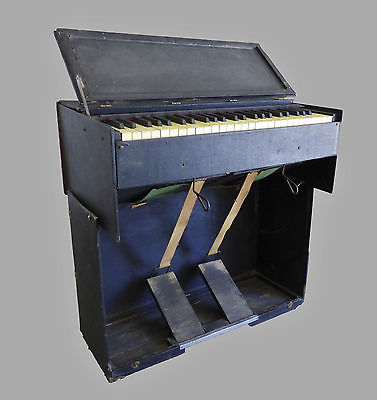

Bernard Shoninger built high quality, expensive pianos from 1850-1929, and the quality and tone of their instruments are known to rival some of the finest brand names ever produced.

This piano was purchased in Mablevale, Arkansas and was manufactured circa 1904 in New Haven, CT. Shoninger Louis XV Salon upright piano is one of the most elaborate and beautifully carved American upright piano models ever produced. By making this a fully functioning piano desk and restoring it to its original condition, I believe it will extend this piece for another 100+ years of use. It turned out amazing for a piece that dates over 165 years of age. I then refinished/restored the original rosewood finish with multiple layers of a tung oil finish. I then built a slide out desktop from an antique solid walnut table top and installed remote control LED lighting in the top and bottom sides of the piece. I retained the keyboard beautiful curved cover and made it removable (without tools), if so desired. I then built a small shelf using parts from these front covers above the original keyboard area that can be used for decoration or holding small computer monitors. I removed the upper and lower covers exposing the original piano strings. The overall condition of the wood exterior casing was in fair shape. This piano was not built with a cast iron harp soundboard so keeping it tuned with a wooden only headboard was a futile effort as a musical instrument. It is made from South American rosewood and was manufactured in London, England circa 1855. This awesome John Broadwood & Sons piano was purchased in Springfield, MO. Lastly, this particular pump organ was built for use in a church setting, as the backside of the unit would be exposed to the church congregation, so the back panel is also fully finished with solid tiger oak panels with beautiful scroll panels that will emit awesome light shadows onto back walls with the LED lights illuminated in dark lit rooms.

Additionally, I installed remote controlled LED strips on the upper and lower sections of the desk that provides the desk illumination and makes for a beautiful setting in any home or business. The desktop includes portal access for electrical cords. I completely disassembled the organ and repurposed it as an organ desk by repositioning the foot control board to the rear of the desk, creating a new desktop from an antique oak drop leaf table, moving the keys and pull stops to the rear of the base cabinet, and finally refinishing the wood finish.
#Antique estey organ serial
Based on its Serial Number, #273606 this organ was manufactured between 18. It was manufactured in Brattleboro, Vermont. This pump organ was purchased in Alexander, Arkansas. This is a beautiful fully functioning family owned desk unit that I believe will allow it to be preserved for decades to come. Lastly, I added remote control LED light strips to the lower foot control unit, the desktop and to the upper hutch unit. I then removed the original keyboard and pull stop knobs and placed them toward the rear side of the desktop for esthetics. I then moved the foot control board to a rearward position, thereby make it more comfortable to use as a desk. I reconstructed the piece as a fully functioning “organ desk” by adding a new tiger oak desktop made from a similar age antique drop leaf table. I complete disassembled this unit and stripped the old finish off followed by restoring the beautiful golden oak finish underneath the old varnish. This two piece non-working pump organ came to me in pretty rough shape, as the varnish finish on it was almost black in color and very crinkled from years of being exposed to the sun and unprotected environmental conditions. It was manufactured in Detroit, Michigan between 18. This Farrand oak pump organ is a personal repurpose/restoration job for a customer.


 0 kommentar(er)
0 kommentar(er)
